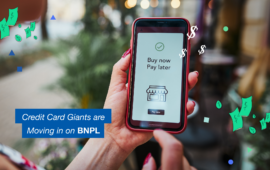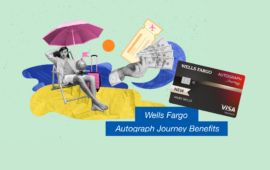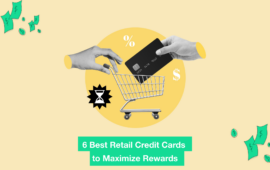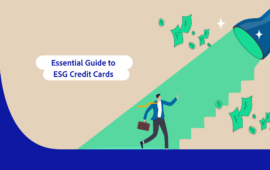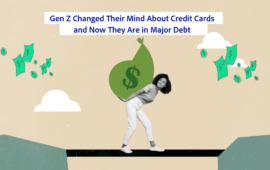Which Debt Should You Pay Off First?
About Casey
Casey is a reformed sports journalist tackling a new game of financial services writing. Mike Francesa once called her a “great girl.”
Read full bio
At a Glance
If you’re swimming in debt and feel so overwhelmed you don’t even know where to start with repaying what you owe, you’ve probably wondered which debt to pay off first.
Depending on your ultimate financial goal, you might take a different approach to what bills or debt you’ll start paying off first. If you want to raise your credit score, for instance, your debt repayment strategy will be different than if you want to become debt-free faster.
How to determine which loan to pay off first?
Before you determine which debt to pay off first, you’ll need to decide which strategy you’re going to implement, whether that’s paying off the smallest debt or the debt with the highest interest rate first, taking a hybrid approach, paying off debts that affect your credit score, or consolidating your debt. Once you know which tactic will work best with you, that will reveal what you should pay off first.
1. Pay off the smallest debt first
- Key benefits: Build motivation as you pay down debt completely and feel encouraged seeing total debts decrease.
- Drawbacks: May take longer to become debt-free and you may pay more in interest.
- Best for: Those who struggle staying motivated when paying off debt.
The debt snowball method is when you throw as much money as you can at your smallest debt balance, regardless of interest rate, while paying the minimum amount due on all your other debts. Once that debt is paid off, put your dollars toward your next smallest debt, and so on until it’s completely paid off.
The thinking with this method is that despite paying more interest in the long haul, you’ll likely get motivation from small victories along the way that will keep you on track toward paying off your debt.
Related: Debt Snowball Method
2. Pay off the highest debt first
- Key benefits: Save money on interest; Savings can go toward other goals.
- Drawbacks: Larger debts with higher interest rates can take longer to pay off, which can be discouraging.
- Best for: Saving money by minimizing the amount of interest you pay.
The debt avalanche method is almost the exact opposite of the debt snowball approach. Instead of paying off your debt by lowest to highest balance, you’re paying off your debt by highest to lowest interest rate.
Let’s say you have four loans or credit cards with the following APRs: 6%, 11%, 16%, and 21%. You’d start with the debt that has a 21% APR, putting as much money as you can afford toward that balance, while paying the minimum on every other debt. Then you’d work your way down to the loan with a 6% APR until you’re completely debt-free.
With the debt avalanche method, the goal is to save as much money as possible. But it’s not necessarily a good fit if you don’t have a lot of extra dough laying around to put even more money toward your high-interest debt. Not to mention, if the balance is particularly large, you might feel like you’re going nowhere fast.
Related: Debt Avalanche Method
3. Pay debts that most affect your credit score
- Key benefits: Improving your credit score; Can qualify for better financing and lower APR in the future.
- Drawbacks: May require sticking to a budget and changes in your spending habits.
- Best for: Those looking to finance a large purchase in the future, such as a house or car.
Your credit score is affected by your payment history, how much debt you have, the number of open credit lines you have, your credit mix, and length of credit history. However, one of the major factors is your credit utilization, which is the percentage of your total credit used from the total credit available to you.
Experts recommend your credit utilization should be below 30%, so paying down debts can help decrease your ratio. This may mean also cutting back on spending to avoid adding to your outstanding credit card balances. Sticking to a budget and changing your spending habits may be difficult, but being debt-free will be worth it in the end.
And, if you improve your credit score, you’ll be able to qualify for better financing with lower interest rates in the future.
4. Consolidate your debt
- Key benefits: A lower interest rate can help you save money; Simplify your finances; repay your debt faster.
- Drawbacks: You may not qualify for a lower interest rate; Could be up-front costs including fees.
- Best for: Someone with multiple monthly debt payments with high APRs.
There are four primary ways to consolidate your debt: A debt consolidation loan (personal loan), a balance transfer credit card, a home equity loan (HEL), or home equity line of credit (HELOC).
A debt consolidation loan, or personal loan, can also be used to pay off high interest debt. Ideally, the new loan has a lower interest rate so you’re able to simplify your finances and save money on interest.
A balance transfer credit card typically offers a 0% APR introductory period, often between 15 and 21 months. Use the card to pay off other credit card debt, and even if you carry a balance from month to month, you will not accrue any interest during that period.
A HEL or HELOC allows you to tap into your home’s equity to pay off your debts. However, this can be more risky because you’re using your house as collateral, and if you fall behind on payments, you could lose your house.
5. Hybrid methods
If paying off your debt by balance or interest rate like with the debt snowball and debt avalanche approaches doesn’t sound like the best fit for you, you can kind of hack the system and try a hybrid debt payoff method:
- Use different approaches for small and large balances (e.g., use the snowball method on debts under $1,000 and the avalanche approach on debts $1,000 or above).
- Change it up if you have a hefty extra income (e.g., put a big work bonus toward debt repayment).
- Try the debt-to-interest ratio strategy, a.k.a. the “debt spiral” (i.e., take each debt balance and divide it by the current interest rate to calculate the debt-to-interest ratio. Start by paying the debt with the lowest debt-to-interest ratio and working your way toward the highest debt-to-interest ratio).
- Decide what to pay off first by type of debt (i.e., secured vs. unsecured debt, installment loans vs. revolving debt).
How to prioritize your debt?
When thinking about paying off your debt, it can be difficult to know where to start. However, before you start paying off debt or even determine which to pay off first, you must first prioritize your debt.
For example, some of your debt may be considered “good debt,” such as mortgages or student loans. These would be your lowest priority debts because ultimately, they are good for the economy. On the other hand, “bad debt” like personal loans, credit cards, auto loans, and similar debt should be prioritized.
Going a step deeper, here are some things to consider:
1. Interest rates
Think about which of your loans and debt has the highest interest rates. For example, student loan rates may be around 7.5% or less while credit card rates can reach 20% or more. Personal loan rates can range between 4% and 36% depending on your qualifications and other factors.
Your debt that has the highest interest rates will likely want to be prioritized first because you’ll be paying more in interest on those balances.
2. Balance after payment
Debt takes time to pay off, but smaller debts can be repaid faster than larger ones. While your total balance may still be high, completely paying off smaller debts can help you feel more accomplished and motivated to continue paying off the larger ones.
3. Defaulting consequences
Are you at risk of defaulting on your debt? If so, these will want to take priority. For example, defaulting on your mortgage can mean you lose your home, so this may be prioritized over an unsecured personal loan. Or, paying off a loan so it doesn’t go to collections may take priority over credit card debt. Consider how severe the consequences are of not repaying the debt and prioritize from there.
4. Tax breaks
Tax breaks can include credits, reductions, or exemptions and may be offered with loans such as mortgages and student loans. These loans are tax deductible, allowing you to reduce your taxable income.
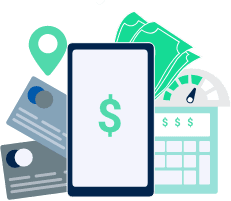
Take Control of Your Debt.
Create a MyCredello account today for clear, personalized steps and tips to help you become debt-free.
Create a MyCredello account today for clear, personalized steps and tips to help you become debt-free.
Should you pay off a loan or credit card first?
The primary reason you should pay off a loan before credit card debt is if the loan is secured, meaning it’s backed by collateral like a car or house. If you default on the loan, you could lose that asset.
Otherwise, you should probably prioritize your credit card debt for several reasons:
- Credit cards have a higher APR, which can cost you a lot of money in the long-run.
- Paying off credit card debt can have a much greater impact on your credit score since you’re decreasing your credit utilization.
- Your credit score looks at your credit mix, so having some installment loans (in addition to revolving credit) isn’t necessarily a bad thing as long as you’re making payments.
What is the best way to pay off debt?
There’s no one-size-fits-all best way to pay off debt. The best approach will differ from person to person, but ultimately, it’s whatever strategy actually works for you. If you’re motivated by the small wins involved with the debt snowball method and that keeps your momentum going, then snowball it up. If saving money on interest in the long term with the debt avalanche approach helps you stay on task, then maybe that’s your best bet.
FAQs
Having no debt isn’t bad for your credit score as long as there’s other activity on your credit reports. For example, maintaining open and active credit accounts, even if you pay off the balance each month. However, if you have no debt and no credit accounts, your score may be damaged. Having a little debt can also help your score as long as you make the payments each month.
Not necessarily. While the psychological implications of paying off small loans first are great, you could be forfeiting more money toward interest payments down the road.
Generally speaking, no. You should almost always pay at least the monthly minimum on all your debts to avoid tacking on late fees and further compiling interest.
If an old debt has reached collections, you’ll probably want to pay that first, assuming the statute of limitations hasn’t passed. The statute of limitations can vary from state to state and by type of debt, but generally it’s about three to 15 years. Benefits of paying off old debt include decreasing your debt-to-income ratio, eliminating unpaid collections that could negatively influence your credit score, and a higher likelihood of getting approved for new credit in the future.
If you’re more concerned with limiting the amount of interest you owe overall, you should pay off high-interest loans first. In other words, use the debt avalanche method.
As long as you’re able to make your minimum monthly payment on your car loan, you’re probably better off focusing on your credit card debt, as that will likely have the higher interest rate. By focusing on your credit card debt, you can help boost your credit score (more on that below).
Paying off credit card debt can help you raise your credit score because it allows you to lower your credit utilization ratio, which is a big contributing factor to your credit score.
If you’re only dealing with credit card debt and have multiple credit cards, the difference in your annual percentage rates (APRs) might be negligible, in which case you might want to think about paying off either your highest balance first and working your way toward the card with the lowest balance, or vice versa.
If you have enough saved up in an emergency fund and won’t need to deplete savings to pay off debt—something you don’t want to do—paying off your highest credit card balance first could be in your best interest. Paying off your smallest credit card first could be your best approach if you don’t have a ton saved up and you need to chip away at your debt with the snowball method.

